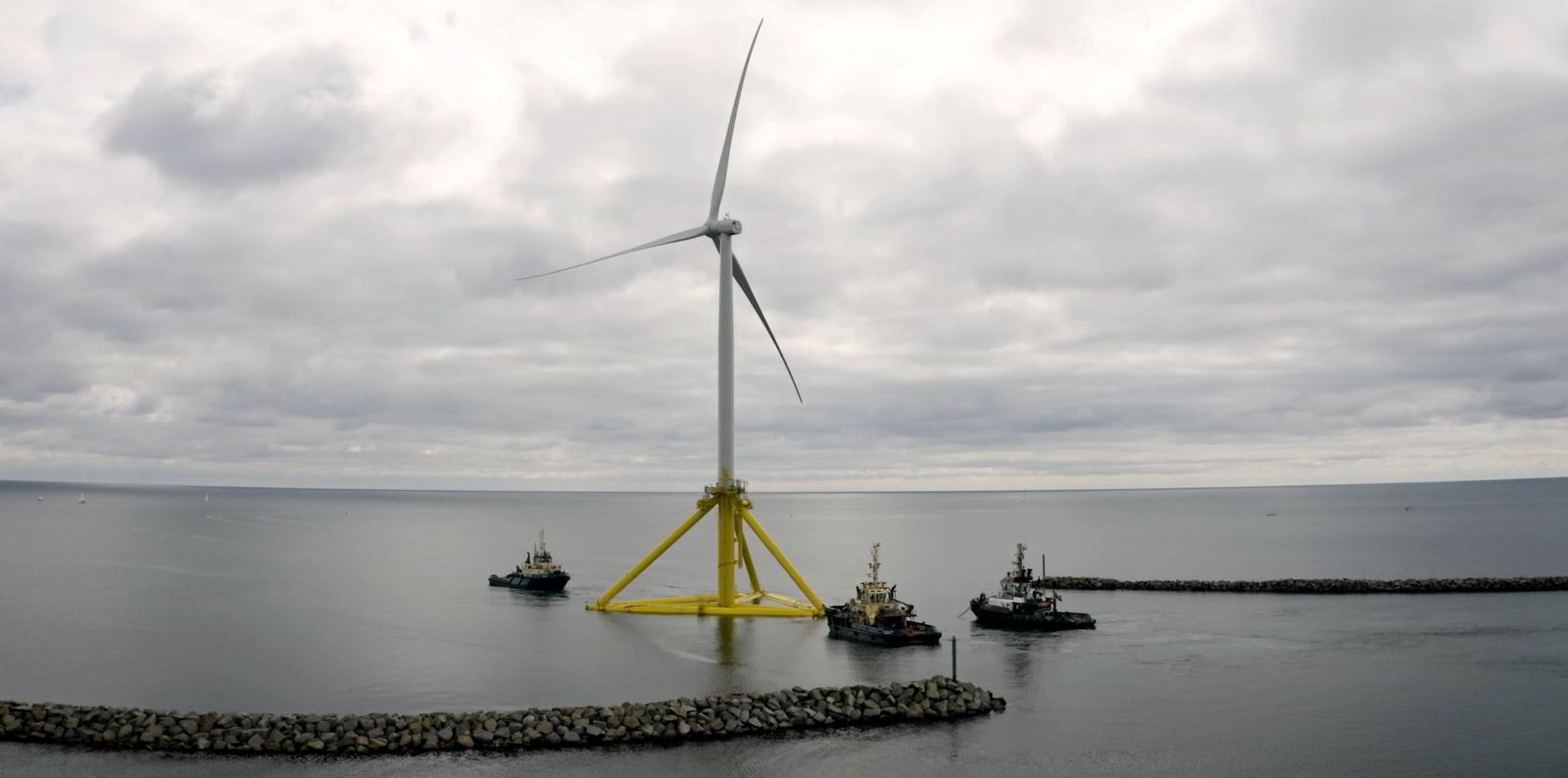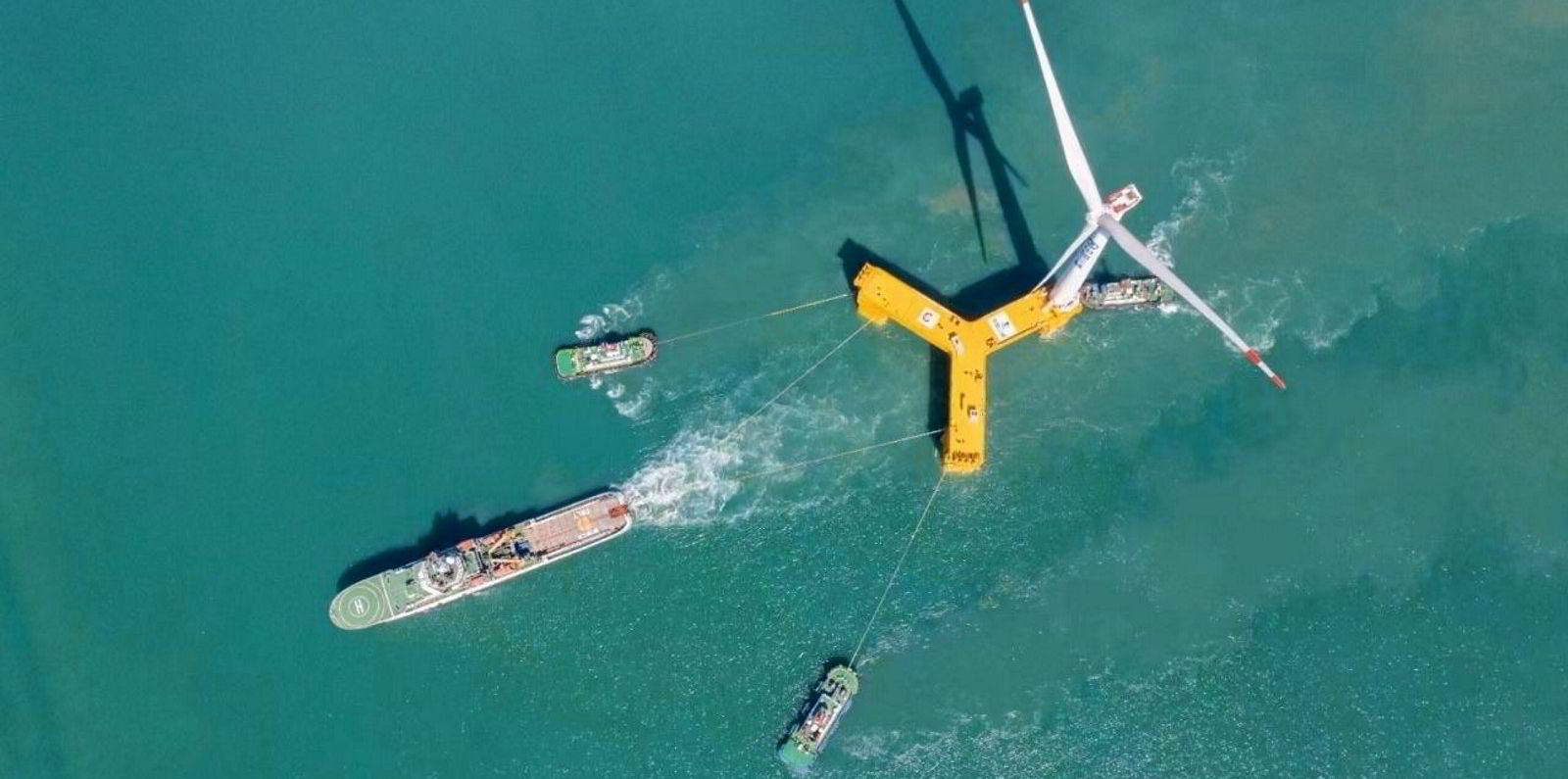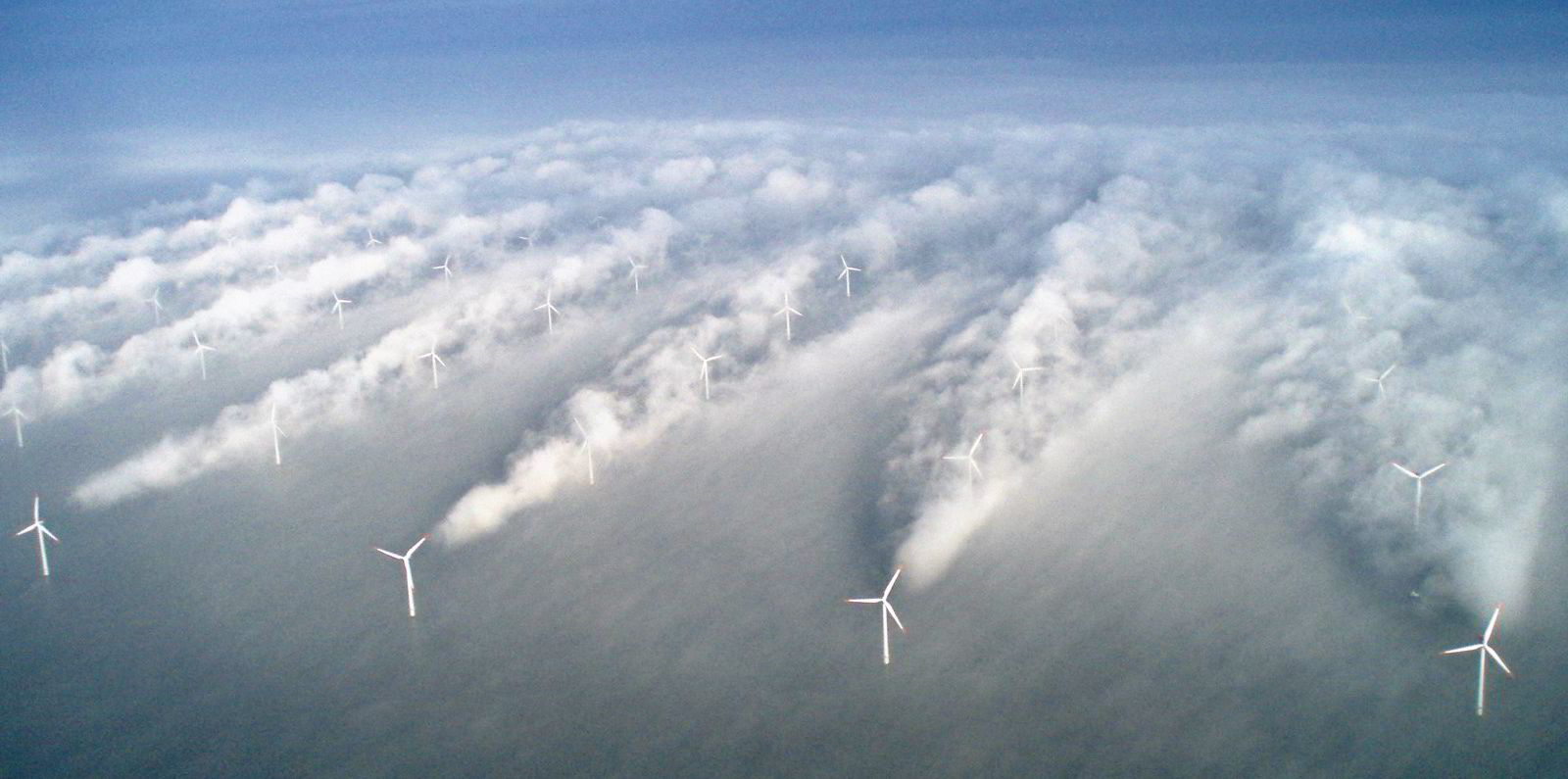The prototype of the TetraSpar floating wind turbine, a pioneering design developed by Stiesdal Offshore Technologies (SOT) backed by energy giants Shell, RWE and TEPCO, is in-tow to its test site off Norway.
The unit, which mates an SOT-engineered tetrahedral tubular steel platform with a 3.6MW Siemens Gamesa machine, is to be trialled at the MetCentre offshore testing site off the west coast of the Nordic nation where the world’s first industrial floating wind unit, the Hywind Demo, now an R&D unit, was moored in 2008.
The steel elements for the unit were factory-manufactured by wind turbine tower maker Welcon before being transported to the Danish port of Grenaa for assembly.
“Next stop: Norway,” said RWE in a LinkedIn post. “There, we will connect it to the pre-installed mooring system at a water depth of approximately 200 meters and commission the turbine.”
The TetraSpar concept was hatched by SOT founder Henrik Stiesdal in 2015 – as reported exclusively by Recharge at the time – to accelerate industrialisation of the fast-emerging sector via a design that “offers important competitive advantages over existing floating wind concepts, with the potential for leaner manufacturing, assembly and installation processes with lower material costs”.
Shell and RWE (then Innogy) became partners in the project in 2018, with Japanese power giant TEPCO joining in 2021.
SOT’s design is one of a series of next-generation floating wind concepts, including X1Wind, Hexicon and others, placing the engineering accent on piece-work concepts where the component parts could be manufacturer in most steel factories and then be shipped to port facilities for assembly and tow-out to project site.
Norway last year launched its long-awaited maiden offshore wind tender, opening the door to bids to develop some 4.5GW of projects in two vast swathes of water that includes areas of a depth necessitating floating units.
Floating wind markets are on the verge of explosive growth globally with analysts expecting a near-1,000-fold expansion of the current fleet as international supply chains take shape to support development of commercial-scale projects around the world, including in key markets in Europe’s northern seas, the US Pacific and off Asia Pacific, where DNV believes half of the 260GW of worldwide floating wind forecast will be turning by 2050.



